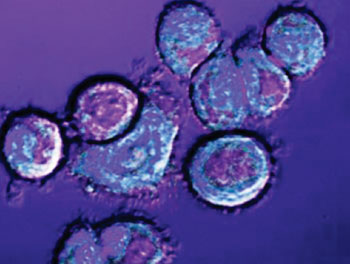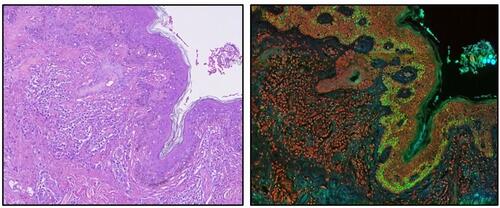Nanoflares Detect Live Tumor Cells in Human Blood
By LabMedica International staff writers
Posted on 08 Dec 2014
Metastasis portends a poor prognosis for cancer patients and primary tumor cells disseminate through the bloodstream before the appearance of detectable metastatic lesions.Posted on 08 Dec 2014
The analysis of cancer cells in blood, the so-called circulating tumor cells (CTCs), may provide unprecedented opportunities for metastatic risk assessment and investigations using NanoFlares, when coupled with flow cytometry, can be used to fluorescently detect genetic markers of CTCs in the context of whole blood.

Image: NanoFlares-specially designed stem cells that have been developed to detect blood-borne cancers. When the cells come in contact with cancerous cells, they emit light (Photo courtesy of the International Institute for Nanotechnology at Northwestern University).
Scientists at Northwestern University (Evanston, IL, USA) working with colleagues from various institutions, used NanoFlare technology designed to recognize a specific genetic code snippet associated with a cancer. The core nanoparticle, only 13 nanometers in diameter, enters cells, and the NanoFlare seeks its target. The genetic targets were messenger RNA (mRNA) that code for certain proteins known to be biomarkers for aggressive breast cancer cells.
The team first used the blood of healthy individuals, spiking some of the blood with living breast cancer cells to see if the NanoFlares could detect them and they used unspiked blood as a control. They tested four different NanoFlares, each with a different genetic target relevant to breast cancer metastasis. Samples were analyzed by flow cytometry using the LSRFortessa Analyzer (BD Biosciences; San Jose, CA, USA). The technology successfully detected the cancer cells with less than 1% incidence of false-negative results.
Chad A. Mirkin, PhD, the director of the Institute of Nanotechnology and senior author of the study said, “This technology has the potential to profoundly change the way breast cancer in particular and cancers in general are both studied and treated. Cancers are very genetically diverse, and it's important to know what cancer subtype a patient has. Now you can think about collecting a patient's cells and studying how those cells respond to different therapies. The way a patient responds to treatment depends on the genetic makeup of the cancer.” The study was published on November 17, 2014, in the journal Proceedings of the National Academy of Sciences of the United States of America (PNAS).
Related Links:
Northwestern University
BD Biosciences













